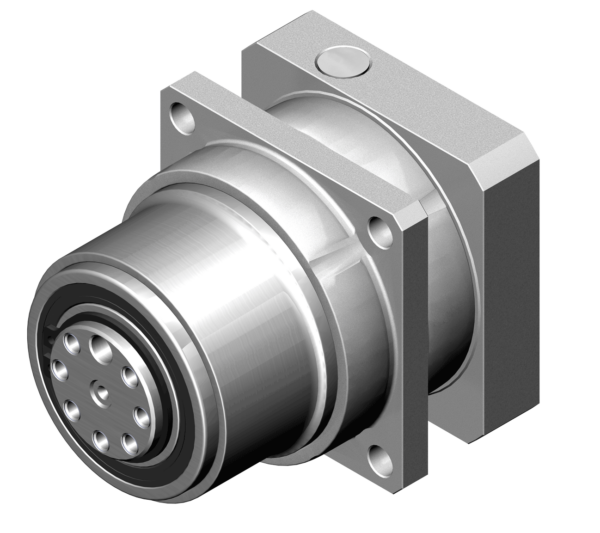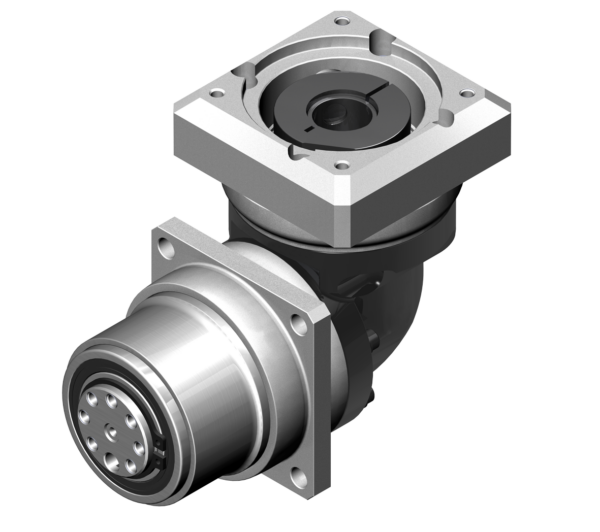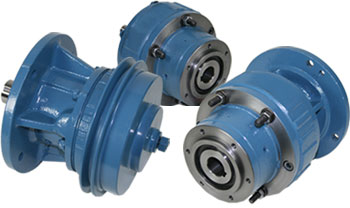Product Description
Helical Gear High Precision Planetary Gear Box For Servo Motor Small Gearbox manufacture
High precision planetary gearbox matched with serve motor, stepping motor are widely used. Lowest backlash<3"); High output torques; High efficiency(96%); Honed toothings; 22 ratios I=3, …., 512; Low noise(<65dB(A)); Any mounting position; Easy motor mounting; Life time lubrication; Figure diameters 40, 60, 80, 120, 160mm. More options.
Planetary gearbox:
ZDE: Precision planetary-round flange output
ZDF: Precision planetary-square flange output
ZDWE: Precise planetary-right angle round flange output
ZDWF: Precise planetary-right angle square flange output
ZDS: Precise planetary-high rigidity, low back lash
ZDR: Helical Gear High Precision Planetary Gear Box
| Rated output torque | N. M | 4.5-1800 |
| Instant stop torque | N. M | Two times of rated output torque |
| Life | Hour | 30, 000 |
| Full load efficiency | 90%, 94%, 96% | |
| Operating temperature | ° C | -25—+90 |
| IP | IP54 | |
| Lubrication type | Lifetime lubrication | |
| Mounting type | Any |
| Product type | PL40 | PL60 | PL80 | PL120 | PL1600 | |
| Torsional stiffness | N. M/arcmin | 0.7 | 1.8 | 4.5 | 12 | 38 |
| Noise | dB(A) | 55 | 58 | 60 | 65 | 70 |
| Max output speed | Min | 10000 | 8000 | 6000 | 6000 | 6000 |
| Recommend input speed | Min | 4500 | 4000 | 4000 | 4000 | 3000 |
Company Information
FAQ
Q: What’re your main products?
A: We currently produce Brushed Dc Motors, Brushed Dc Gear Motors, Planetary Dc Gear Motors, Brushless Dc Motors, Stepper motors, Ac Motors and High Precision Planetary Gear Box etc. You can check the specifications for above motors on our website and you can email us to recommend needed motors per your specification too.
Q: How to select a suitable motor?
A:If you have motor pictures or drawings to show us, or you have detailed specs like voltage, speed, torque, motor size, working mode of the motor, needed lifetime and noise level etc, please do not hesitate to let us know, then we can recommend suitable motor per your request accordingly.
Q: Do you have a customized service for your standard motors?
A: Yes, we can customize per your request for the voltage, speed, torque and shaft size/shape. If you need additional wires/cables soldered on the terminal or need to add connectors, or capacitors or EMC we can make it too.
Q: Do you have an individual design service for motors?
A: Yes, we would like to design motors individually for our customers, but it may need some mold developing cost and design charge.
Q: What’s your lead time?
A: Generally speaking, our regular standard product will need 15-30days, a bit longer for customized products. But we are very flexible on the lead time, it will depend on the specific orders.
Please contact us if you have detailed requests, thank you !
| Application: | Power |
|---|---|
| Certification: | CCC, CE, UL. RoHS |
| Manufacture Name of Servo Motor 1: | Panasonic |
| Manufacture Name of Servo Motor 3: | Miki Pulley |
| Manufacture Name of Servo Motor 2: | Nikki Denso-Na50 |
| Reduction Ratio: | 9 |
| Customization: |
Available
| Customized Request |
|---|

What considerations should be taken into account when choosing lubrication for pulley gearboxes?
Choosing the appropriate lubrication for pulley gearboxes is crucial for their smooth operation, longevity, and overall performance. Several considerations should be taken into account when selecting lubrication for pulley gearboxes. Here’s a detailed explanation of these considerations:
Operating Conditions: The operating conditions of the pulley gearbox play a significant role in selecting the right lubrication. Factors such as temperature, humidity, and exposure to contaminants can impact the lubricant’s effectiveness. For example, in high-temperature environments, lubricants with high-temperature stability and oxidation resistance are required to prevent degradation and maintain proper lubricating properties. Similarly, in wet or dusty environments, lubricants with good sealing properties and resistance to water or particle contamination are necessary to protect the gearbox.
Load and Torque: The load and torque requirements of the pulley gearbox influence the selection of lubrication. Higher loads and torques typically require lubricants with higher film strength and load-carrying capacity. The lubricant should provide sufficient lubricating film thickness to prevent metal-to-metal contact and minimize wear and friction. Manufacturers often specify the recommended load and torque capacities for their gearboxes, along with corresponding lubrication requirements.
Speed: The speed at which the pulley gearbox operates is another important consideration. High-speed applications require lubricants with low viscosity to minimize internal friction and power losses. On the other hand, low-speed applications may benefit from lubricants with higher viscosity to ensure proper lubrication and film thickness under the lower rolling speeds. Proper selection of lubrication based on the gearbox’s speed helps optimize its efficiency and performance.
Lubricant Type: Different types of lubricants are available for pulley gearboxes, including oils and greases. Oils have lower viscosity and are suitable for systems with continuous lubrication, while greases have a semi-solid consistency and provide better adhesion and retention properties. The choice between oil and grease depends on factors such as operating speed, temperature, sealing capabilities, and the gearbox’s specific requirements. Some gearboxes may have specific lubricant recommendations from the manufacturer, and deviating from these recommendations may affect warranty coverage.
Compatibility: When selecting lubrication for pulley gearboxes, compatibility with gearbox materials is essential. The lubricant should be compatible with the materials used in the gearbox, including seals, gaskets, bearings, and gears. Incompatibility can lead to seal degradation, swelling, or premature wear of components. Manufacturers often provide guidelines on lubricant compatibility, and it is advisable to consult these recommendations to ensure proper compatibility and avoid potential issues.
Maintenance and Re-Lubrication: Consideration should be given to the maintenance requirements and re-lubrication intervals of the pulley gearbox. Some lubricants require more frequent reapplication or periodic maintenance, while others offer extended service life. The ease of re-lubrication and accessibility of lubrication points should also be taken into account. Manufacturers may provide guidelines on the recommended re-lubrication intervals and procedures, and it is important to follow these recommendations to maintain optimal gearbox performance and durability.
Environmental Regulations: Depending on the application and location, there may be environmental regulations or restrictions on the type of lubricants that can be used. It is important to consider any applicable regulations and ensure that the selected lubricant complies with environmental standards and regulations. Using environmentally friendly lubricants can help minimize the impact on the environment and ensure compliance with applicable regulations.
Manufacturer Recommendations: Manufacturers often provide specific recommendations for lubrication based on their gearbox designs and specifications. These recommendations may include the type of lubricant, viscosity grade, and any additional considerations. Following the manufacturer’s recommendations is crucial to ensure warranty coverage and maintain the gearbox’s performance and longevity.
By considering these factors, manufacturers and users can select the most suitable lubrication for pulley gearboxes, optimizing their operation, reducing wear, and prolonging their lifespan.

How do gear ratios in pulley gearboxes impact their performance?
The gear ratios in pulley gearboxes have a significant impact on their performance, influencing factors such as speed, torque, and power transmission efficiency. By adjusting the gear ratios, the performance characteristics of the pulley gearbox can be tailored to meet specific application requirements. Here’s a detailed explanation of how gear ratios affect the performance of pulley gearboxes:
Speed: The gear ratio determines the speed relationship between the driving and driven pulleys in a pulley gearbox. A higher gear ratio, achieved by using a smaller driven pulley or a larger driving pulley, results in a slower output speed compared to the input speed. Conversely, a lower gear ratio, achieved by using a larger driven pulley or a smaller driving pulley, leads to a higher output speed. By selecting the appropriate gear ratio, the speed of the driven pulley can be adjusted to meet the desired operational requirements.
Torque: Gear ratios also affect the torque output of the pulley gearbox. The torque is inversely proportional to the gear ratio, meaning that a higher gear ratio results in increased torque at the driven pulley, while a lower gear ratio reduces the torque. This is due to the mechanical advantage provided by the pulley system. By adjusting the gear ratio, the torque output can be optimized to match the torque requirements of the load being driven by the gearbox. Higher gear ratios are useful in applications that require greater torque, such as lifting heavy loads, while lower gear ratios are beneficial for applications that prioritize higher rotational speed.
Power Transmission Efficiency: The gear ratios play a role in determining the power transmission efficiency of pulley gearboxes. Generally, pulley gearboxes with higher gear ratios tend to have lower power transmission efficiency. This is primarily due to increased friction and energy losses associated with the mechanical advantage provided by smaller driven pulleys or larger driving pulleys. On the other hand, lower gear ratios typically result in higher power transmission efficiency. To optimize the overall performance of the pulley gearbox, it is essential to select gear ratios that strike a balance between the desired speed, torque, and power transmission efficiency.
Operational Range: The range of operation of a pulley gearbox is influenced by the available gear ratios. Different gear ratios provide different speed and torque ranges, allowing the gearbox to adapt to a variety of load conditions. By incorporating multiple pulleys, adjustable pulley systems, or variable speed drives, pulley gearboxes can offer a broader operational range. This flexibility enables the gearbox to handle a wide range of applications and accommodate varying speed and torque requirements.
System Design: Gear ratios also impact the overall design of the pulley gearbox. The selection of gear ratios influences the size, arrangement, and number of pulleys required in the system. Higher gear ratios may require smaller driven pulleys or larger driving pulleys, which can influence the physical dimensions and layout of the gearbox. It is important to consider the space constraints, load requirements, and other design considerations when determining the optimal gear ratios for a pulley gearbox.
In summary, gear ratios in pulley gearboxes have a significant impact on their performance characteristics. By adjusting the gear ratios, the speed, torque, power transmission efficiency, operational range, and overall design of the pulley gearbox can be tailored to meet specific application requirements. Careful consideration of the desired performance parameters is essential when selecting and designing pulley gearboxes to ensure optimal performance and efficient power transmission.

How do pulley gearboxes handle variations in speed ratios and torque requirements?
Pulley gearboxes are designed to handle variations in speed ratios and torque requirements by utilizing different pulley sizes, configurations, and mechanical principles. They offer flexibility and adaptability in adjusting speed and torque according to specific application needs. Here’s a detailed explanation of how pulley gearboxes handle variations in speed ratios and torque requirements:
Pulley Size and Configuration:
Pulley gearboxes employ pulleys of different sizes and configurations to achieve the desired speed ratios and torque requirements. By varying the diameters of the driving and driven pulleys, the rotational speed can be adjusted. Larger driving pulleys and smaller driven pulleys result in a higher speed ratio, while smaller driving pulleys and larger driven pulleys lead to a lower speed ratio. The selection of pulley sizes allows for precise control over speed variations in pulley gearboxes.
Mechanical Advantage:
The mechanical advantage provided by pulley gearboxes allows them to handle variations in torque requirements. Pulley gearboxes utilize the principle of mechanical advantage, where the larger pulley transfers more torque to the smaller pulley. This allows the gearbox to increase or decrease the torque output while maintaining a consistent speed ratio. By adjusting the pulley sizes and the mechanical advantage, pulley gearboxes can match the torque requirements of the driven machinery or system.
Tension and Friction:
Tension and friction play a crucial role in how pulley gearboxes handle variations in speed ratios and torque requirements. The tension in the belts or ropes connecting the driving and driven pulleys helps maintain a firm grip and prevent slippage, ensuring reliable power transmission. By adjusting the tension, the efficiency of power transmission can be optimized. The friction between the belts or ropes and the pulleys also contributes to the handling of torque variations. The frictional force allows for the transfer of torque from the driving pulley to the driven pulley, accommodating changes in torque requirements.
Adjustability:
Pulley gearboxes offer adjustability, allowing for variations in speed ratios and torque requirements. The pulleys can be moved or adjusted to change the effective diameter or position, altering the speed and torque output. This adjustability enables precise control over the performance of the gearbox, making it adaptable to different operational needs and load conditions.
Compound Pulley Systems:
Compound pulley systems are another mechanism used in pulley gearboxes to handle variations in speed ratios and torque requirements. These systems consist of multiple pulleys arranged in series or parallel configurations, incorporating intermediate pulleys and idler pulleys. The compound pulley systems allow for complex speed and torque conversions, providing a wider range of speed ratios and torque capabilities.
Overall, pulley gearboxes handle variations in speed ratios and torque requirements through a combination of pulley size and configuration, mechanical advantage, tension and friction control, adjustability, and the utilization of compound pulley systems. These features enable pulley gearboxes to efficiently transmit power, control speed, and adapt to different operational demands in a wide range of industrial applications.


editor by CX 2023-09-28
